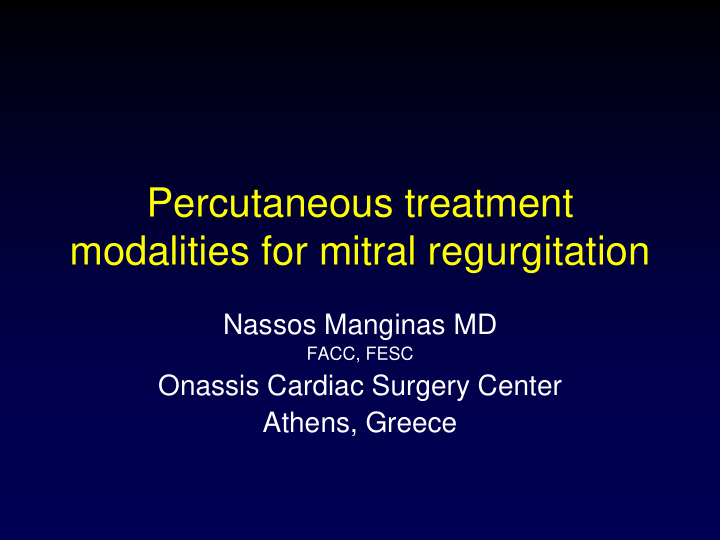



Percutaneous treatment modalities for mitral regurgitation Nassos Manginas MD FACC, FESC Onassis Cardiac Surgery Center Athens, Greece
N=5001 4/2001-7/2001
1 year survival 89,5±2,3% 96,0±1,4% p=0,02
Lesions leading to MR
Echo guidance • Echo is the gold standard primary imaging modality for lesion and dysfunction diagnosis • Needs to be reviewed by the Interventional Cardiologist • A nomenclature is needed • A preprocedural conference is necessary
E-valve. First Case Performed
EVEREST I Trial Inclusion Criteria
EVEREST II
Immediate Results E-valve
P3 P2 P1
TV AV PV P3 MV P2 P1
Superior or inferior location?
Not at risk CS to LCx relation At risk
EVOLUTION Procedural success Safety Death+MI+tamponade
EVOLUTION 1 year f/up
EVOLUTION Percent responders at 6 months and 1 year
EVOLUTION II
Conclusions 1 • Percutaneous techniques for mitral insufficiency are feasible and safe • Phase I results confirm the effectiveness of both E-valve and coronary sinus annuloplasty techniques, respecting the effect of learning curves • Appropriate case selection is crucial for each class of devices
Conclusions 2 • Significant knowledge should be acquired on the evaluation of MV anatomy and dysfunction, and the proper use of echo • It is very likely that in the future these techniques will play a significant role in the management of patients with mitral insufficiency
Recommend
More recommend